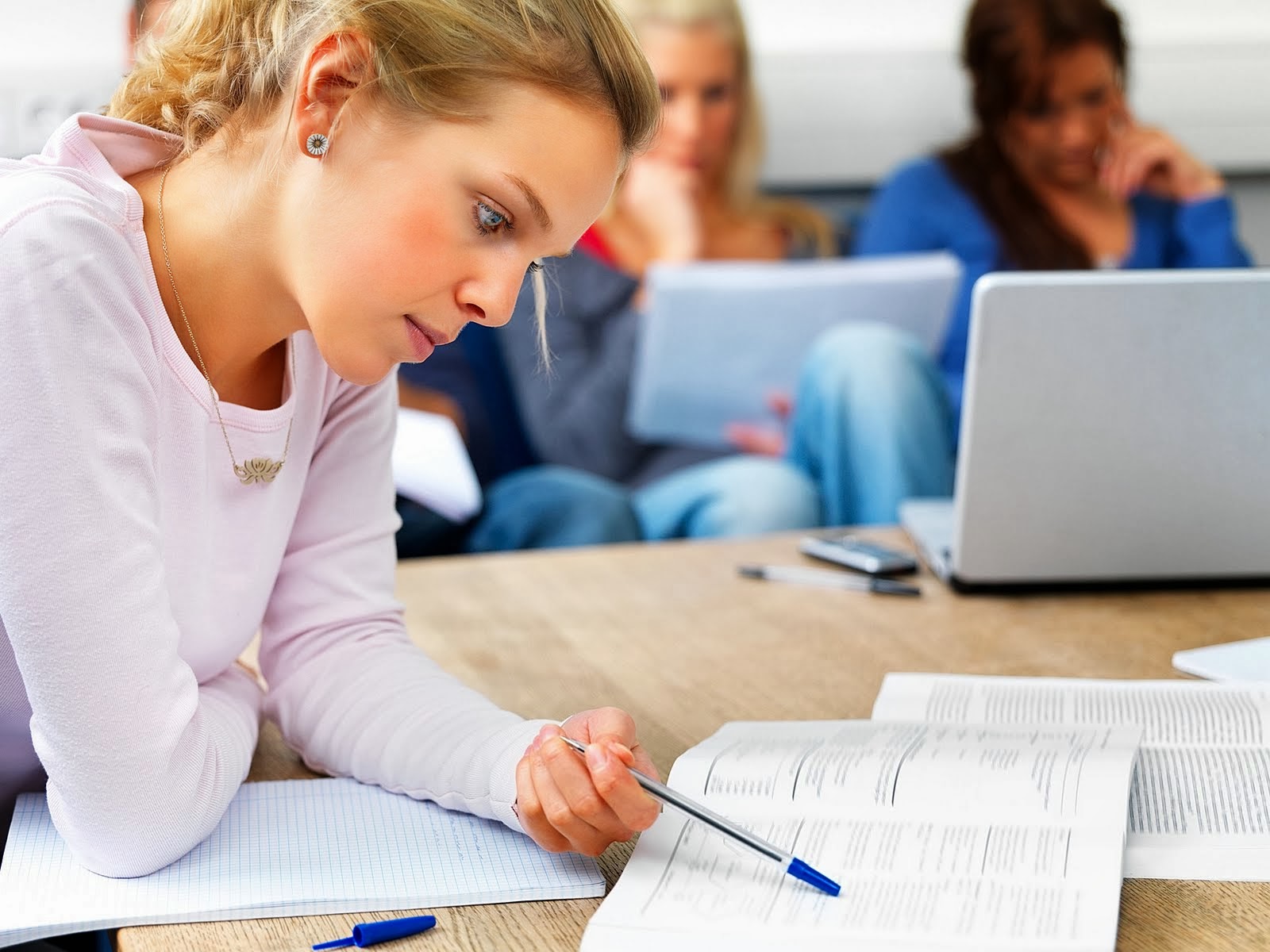Study Techniques – Methods To Study Better

The study techniques are a tool to enforce what we learn. They are becoming one of the most important concepts in the student world. After seeing all that school failure is reaping in schools, students are left with the option of improving performance standards, tips, study techniques or recipes that can clearly improve results. The study techniques are a set of tools, essentially logical, to help improve performance and make the process of memorization and study.
It is essential motivational factor of the person involved in the study. See the profits of the study, think about learning as a necessary and vital phase in the development of self and understand that a method facilitates the acquisition of this knowledge is the first step you need to internalize the student. The start of a course of study methods should motivate students because it offers the possibility to improve, to make better use of your time and optimize your dedication. Also, be aware that learning and develop a method is important for subsequent application in other courses and higher education to perform. The purpose is to acquire working guidelines applicable throughout their academic life.
The method we use to study when studying is crucial since the content or materials that go to study alone do not cause an effective study, unless you seek a good way to provide us your understanding, assimilation and implementation.
Order is essential. It is vital to acquire knowledge, firmly, consistently and logically, since the disruption of content prevents easy integration and forget easily.
Environmental factors are also an important factor to keep in mind: you must take care of the lighting, temperature, avoid distractions (TV-totally ruled-noise, etc.) so that the chosen site is suitable. Your place of study must be for comfortable, friendly and very familiar.

Location: It is important to be a family place that favors your concentration and free of interruptions.
Chair: should be neither too comfortable nor uncomfortable, you have to feel comfortable. The chair should be simple, straight, to provide an upright position. The height should be related to your table and your height.
Mesa: must be flat, rigid, wide to have on hand all the material you need it .
Lighting: the light must enter through your left if you’re right handed, and right if you are left handed. Preferably it should be natural. Otherwise, the closest thing you’ll find sunlight.
Noise: study in noisy environments greatly complicates the concentration. Usually music too distracting. It is far better get used to concentrate in a quiet environment.
Temperature: you must study at an average temperature. Much heat can make you sleepy. It is imperative that you get used to ventilate the room from time to time, coinciding with breaks.
Cabinet: is the place to be hand sorted and study materials instead. When you study, you should have in view the schedule, your schedule and work plan.
Distance Eye: the ideal distance from the computer or paper is about 15 inches.
The physical space contributes to the student’s concentration and control of that space is one of the precautions you should take the student. Aspects such as room ventilation, the combination of natural – artificial light and indirect – direct, the noise level , music -like relaxation, … contribute to the care of an environment that can influence the correct learning . The student must be aware of the importance of always study in the same place in their own room, the dining room of the house, the library, but a place that facilitates concentration and which have at their disposal all the necessary materials for the development of his work: textbooks and reference, notes, papers, pens, highlighters. However, you have the resource of internet, will provide almost all the tools necessary for their studies in one place, if you have this resource is very little you have to look outside of this program, only enough to know the whole. Not having it, will be the traditional methods which have to search to perform their work.
1). Select a place to study
2). That it is comfortable
3). avoid distractions
4). Having your work tools or instruments at hand
5). Concentrate on their tasks individually and take time for each
6). Self-examination and corroborate their work before submitting

Your study schedule and planning must be tailored to your needs.
Good planning and a disciplined study schedule can give positive results. It is one of the most difficult aspects to comply but is certainly one of the keys to excellent results. These are the characteristics that should be planning your study time:
Realistic: you can and hold it, you practical.
Personal: adapted to your personal circumstances. The same times are good for everyone.
Flexible: if you cannot fulfil the plan, you should review it and make necessary modifications to really be useful to you . It is preferable to start with small, achievable goals to avoid , of a sudden, you fester in discouragement.
Constant: you will find that this is a vital feature. If the above three conditions are not met, it will be difficult to meet. You must evaluate your curriculum with honesty and realism, starting with easy and short-term objectives. Acquire a good study method requires perseverance and dedication.
Be Practical: you’re not a machine and you run like clockwork. Therefore, you must provide a timeout to help you adapt to unforeseen circumstances: something that was not counted, something new, whatever you may happen.
Breaks: of course, the duration of the breaks is commensurate with the time of study. You should never take long breaks. When you resume the study you’ve lost focus and have to start from scratch.
A plan that meets all of these requirements will save time you can devote to other activities. Also save effort and you will achieve more efficiency. Acquiring a diary study habits, avoid last minute overdo. You’ll have everything ready, you will surrender better and improve your self- esteem.
It is obvious that the study methods should be primarily preventive approach in your school application. And this approach must be comprehensive, as it should be directed to all students: those who have difficulty in acquiring their school learning like having this program you have on hand and all those who wish to improve their way of studying. A student may be motivated to learn to study better while others can do to study much better than they did to optimize their personal resources. The importance of the application of the methods of study lies in the relationship between teaching and studying at school the learning process of each of the materials that are part of the curriculum. Schools should be included in the curricula of the subject learning to learn or incorporate methods to facilitate the understanding of the various techniques that students must use to learn. It is the teacher who then must take the first step to reflect and help students understand the importance of acquiring a number of strategies such as ours that allow them a progressive autonomy in the acquisition of new learning.
1. Organización of the work material. Everything in its place and a place for everything.
2. Distribute time flexibly adapted to change and circumstances.
3. Have into account the specific difficulties of each subject.
4. Find out staff work pace
5. be realistic and assess the ability of understanding, memorization.
6. Start for the toughest jobs and leave the easiest for last.
7. Memorize data, understand and fix.
8. No study materials that may interfere: eg, English vocabulary in German.

Is to make a quick read to learn first what it is.
In this first step will get:
• A quick understanding of the subject.
• Form the general outline of the text where the insert specific data obtained in the second reading.
• Start studying in a smooth manner so that we go on entering easier.
• Furthermore, it can serve to give out your notes before going to class and so:
• Put you clear your doubts clear it in class, and take notes more easily.
These are the words we write the left / right side of the text and we express the main ideas of it. Sometimes we come to invent other explicit.
Is to re-read the text, but more slowly, paragraph by paragraph, reflecting on what we read. Thus better understand the subject to study, so you will be much easier to assimilate and learn.
To enlarge the vocabulary necessary to work with synonyms and antonyms. Search the dictionary the words you do not know.
Common Reading:
It is the ordinary means of acquiring knowledge that enriches our vision of reality, increases our thinking and facilitates the ability of expression.
Read:
It is one way of learning human being and therefore plays a major role in the effectiveness of intellectual work.
Read equates to think and to read means identifying the basic ideas, capturing the most relevant details and critical judgmental about everything that you read.

Attitudes to Reading. What should I do when I Read?
Focus your attention on what you are reading, without interrupting the reading with concerns outside the book.
Intellectual work requires repetition, persistence. The fickle reader will never become a good student.
You must be active before you read, you must read, re-read, extract what is important to underline, outline, contrast, we read with wonder about the mind active and alert.
Do not adopt prejudices against certain books or topics you are going to read. This enables you to deepen the content of absolutely impartial.
In reading data appears, words, expressions that do not know their meaning and were in doubt, this blocks the learning process. So do not be lazy and you look in the dictionary the words you do not know its meaning.
It is noted by a line (lines, scratches or other signs) the essential key phrases and words in a text.
Why it should be emphasized?
• Because we arrived quickly to the understanding of the structure and organization of a text.
• Helps focus attention
• Promotes active study and interest in capturing the essence of each paragraph.
• Critical-reading is increased because include the essential from the secondary.
• Once underlined can repair a lot of stuff in no time.
• It is essential to make outlines and summaries condition.
• promotes assimilation and develops the capacity for analysis and synthesis.
What should we Emphasize?
• The main idea, which may be the beginning, middle or end of a paragraph. We must find ideas.
• Technical or specific word from the subject we are studying and some relevant data enabling a better understanding.
• To verify that we have correctly emphasized ask questions about the content itself and the answers are contained in the words underlined then the emphasis will be great.
How to detect the most important Ideas to Highlight?
• Those that give coherence and continuity to the central idea of the text.
• Around them are rotating secondary ideas.
How should you emphasize?
• Best with pen and pencil. Only own books
• Use crayons. A color to highlight main ideas and another for the secondary ideas .
• We do use a pencil in a single color, we can differentiate the underline with different types of lines
When should you emphasize?
• Never in the first reading, because we could underline words or phrases that do not express the content of the subject.
• People who are highly trained in reading comprehension should do in the second reading.
• People trained at least a third reading.
• When we know the meaning of all the words in them and in the context in which they are expressed.

It is the graphic expression of emphasis at a summary containing the main ideas, supporting ideas and details from the text.
Why is it important to have an Outline?
Because it allows a glimpse only obtain a clear overview of the topic, we select and delve into the basic contents and analyze best to fix them in our minds.
How do we make an outline?
• Develop a comprehensive reading and underlining correctly performs well for hierarchical concepts (Main Idea, secondary …)
• Use key words or very short phrases without any details and brief.
• Use your own language expressions, reviewing the headings, titles and text captions.
• Considering that the header scheme clearly expresses the main idea and allows you to go down to details that enrich the idea.
• Finally select the type of scheme you are going to perform.
Memory
One issue that has sparked controversy among education professionals has been the use of memory in the learning process. The use of mnemonics can help you, but you must use them with caution and only in specific content, as you run the risk of developing a style of mechanical memory and unintelligent off the comprehensive report, which provides a type of logical associations between prior knowledge and new information. However, it seems logical that some data are likely to undergo a purely rote learning.
Attitude in Exams
A big mistake that you make as a student is often accumulating the previous study for the exam, and even the day before now. Intensively preparing a test at the last minute, even if it is a line to say, will cause backfire on you: fatigue, mental fatigue and very low academic performance. The day before, a study should be smooth, without trying to rush stealing your sleep hours. On test day absolutely must find fullness of your faculties.
In the particular situation of the review, there are some rules that might help you. For example, answer questions and not bog the order in the first question (if in doubt, go to the next). Regarding the “nerves ” that can rob you in this situation, you can implement your own personal version of Brief and relaxation techniques, the better you go , spread sheets while examination or dictate the points.
In the tests, exercises and assignments is where the student must demonstrate the results of their study. Should know and follow some guidelines when you are performing a test or exercise. It is advantageous that the student knows, depending on your teacher, the type of tests you must face: type of test , open questions, oral examinations , text comments , etc. . In this sense, the teaching staff of the school or college should seek to assist the student explaining what type of exam it will be and how they want the work submitted. But no doubt that the students themselves should ask and obtain this information prior to the study. Learn the methodology of tests using their teacher favours planning strategy before you start to study or prepare for a job. Self-control, pre- concentration, the use of time and the correct reading of the statements are other factors that influence the performance of the study and the student must seek control.
